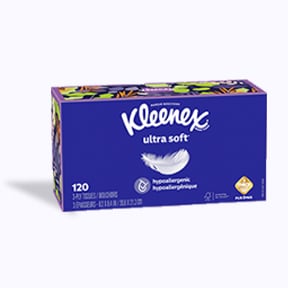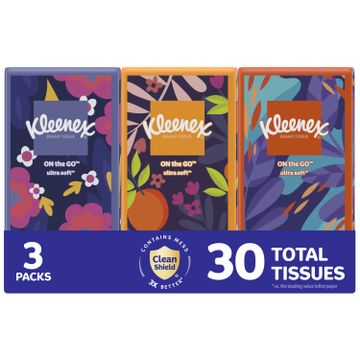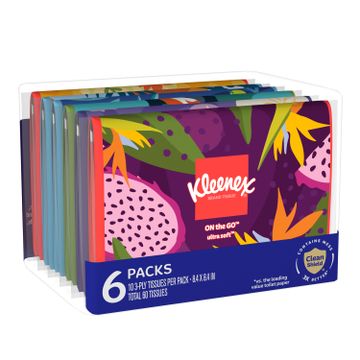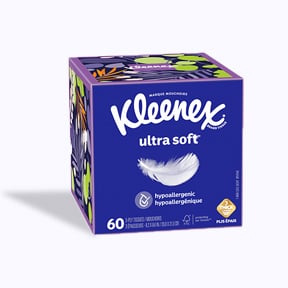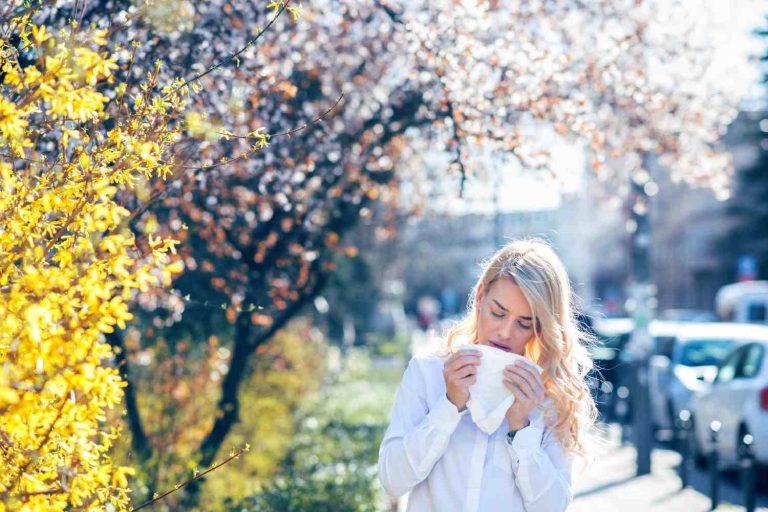
Itching to get outside and enjoy the fresh air but battling itchy, watery eyes and sneezing? You’re not alone. About 20-30% of Canadians suffer from seasonal allergies1 – and that’s nothing to sneeze at! Spring time in Canada brings beautiful blooms but also tree pollen, the first seasonal allergen that typically starts in March. Rest assured, with a little planning and Kleenex® facial tissues that offer unbeatable softness*, you don’t have to let airborne irritants stop you from enjoying the warmer weather and all the beauty this season has to offer.
Here’s everything you need to know about tree pollen allergies in Canada and what you can do to get some relief.
What are the Symptoms of Tree Pollen Allergies?
It’s not uncommon to think you’ve caught a cold when you actually have allergies2. Sometimes referred to as hay fever, tree pollen allergies may cause these symptoms:
- nasal congestion
- sinus pressure
- runny nose
- itchy, watery, red eyes
- coughing
- scratchy throat
- postnasal drip
- fatigue2
Types of Tree Pollen Allergies
Allergy season in Canada for tree pollen allergy sufferers tends to run from March to June. Different trees release their pollen at different times of the year, so it can be helpful knowing which trees trigger a reaction. For example3,4, white oak, bur oak and red maple trees typically release their pollen in March; with willow, birch, and ash trees starting in April. Western white pine trees pollinate between June and July, while Eastern white pine trees pollinate between May and June. Douglas Maple, in Western Canada, pollinates in August and September, and Sugar Maples release pollen in September – October. If you know which trees set you off, you can be better prepared when the time comes.
How do you get diagnosed with a tree pollen allergy
The symptoms of a pollen allergy are usually clear enough for your family doctor to identify, but they might refer you to an allergist to get a more specific diagnosis. An allergist can perform a skin prick test to figure out which specific pollens seem to trigger an allergic reaction.
How do you Relieve Tree Pollen Allergy Symptoms?
In Canada, the largest concentration of tree pollen is released between mid-March and mid-June. For allergy suffers, luckily there are a number of remedies that may help relieve symptoms of tree pollen allergies so you get back outside and enjoy the season.
- Antihistamines
- Kleenex® Ultra Soft™ Tissues
- Stay inside on windy days
- Check the daily pollen count
- Vacuum regularly with a vacuum that uses a HEPA filter
- Use your vehicle’s air conditioner instead of rolling down the windows
- Nasal irrigation device (such as a neti pot)
- Dress for the occasion
- Wash it off
- Carry a Kleenex® On-The-Go Pocket Pack
“Allergies” are the result of releasing a substance called histamine. This occurs because your body’s immune system mistakes pollen and other allergens as a threat and overreacts in an attempt to protect itself. Antihistamines are designed to help alleviate allergy symptoms by blocking your body’s release of histamine, thus preventing the symptoms. Check with your doctor or healthcare provider to see if an antihistamine would work for you.
Tree pollen allergies tend to last for months, so you’ll want to ensure you have the softest tissues around your home to comfort your runny nose during allergy season in Canada. Made for extra comfort, our 3-ply Kleenex® Ultra Soft™ tissues provide unbeatable softness (vs. leading national ultra brands) for when only the softest touch will do -- perfect for soothing your nose every time you need relief. Keep a box of Kleenex® Ultra Soft™ tissues in the kitchen, living room, office, bathroom and bedroom to make sure the softest comfort for your nose is always at arm’s reach.
Tree pollen is an airborne allergen, which means it’s at the mercy of the wind. And if you suffer from tree pollen allergies, that means you are too. If you can, stay inside with windows and doors closed during windy days to avoid breathing in stray pollen. Use an air conditioner to help keep indoor temperatures comfortable. If you have a window air conditioner, keep the vent closed to the outside.
Pollen counts are highest on dry, windy days and lower after rainfall or at night – and usually peak between 5 a.m. and 10 a.m. and again at dusk, so avoid these times if you plan to be outdoors5. If you plan to exercise outside during pollen allergy season in Canada, consider wearing a face mask designed to filter out pollens. As soon as you get home, rinse out your nose with saline or ask your doctor about nose sprays to provide relief.
A tree pollen level above 50 is high, while one to 10 is considered low. Be sure to check your local pollen count before venturing outside and plan accordingly.
Tree pollen, just like dust, animal hair, and other allergens can be kept at bay with regular housecleaning. Vacuum 1 – 2 times a week with a HEPA filter vacuum to help trap allergen particles lingering on carpets and surfaces.
There’s nothing quite like the open road, but avoid the temptation to roll down your windows during tree pollen season. Instead, rely on your vehicle’s air conditioner system, which is equipped with an air filter. That filter can block pollen from entering your cabin so you can focus on the drive.
Take the direct approach to clearing your sinuses by irrigating them with a neti pot. Be sure to use sterile or distilled water. Never use tap water.
Most people know to dress for the weather, but you should dress for the pollen count, too. Rough fabrics, such as wool, tend to attract and retain more pollen than smoother fabrics. Try to wear clothing made from cotton or polyester to limit pollen retention.
Pollen is sticky, and tends to attach itself to your hair and skin. Showering at night before going to bed to wash off any residual pollen.
You never know when tree pollen allergies will strike. That’s why it’s a good idea to always keep a Kleenex® On-The-Go Pocket Pack or a Kleenex® Travel Size Tissue Pack on-hand to provide immediate relief. These convenient facial tissue packs are made of 3-layers to comfort your face and help protect hands. Tuck them in your purse, diaper bag, gym bag, or in the car so the comfort and superior softness of a Kleenex® tissue is always within reach.
With Kleenex® brand tissues, you can face allergy season in Canada head on!
*vs. leading national brands' like variants


